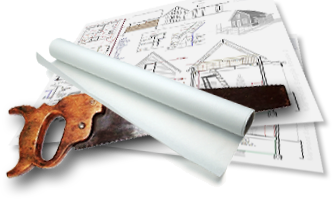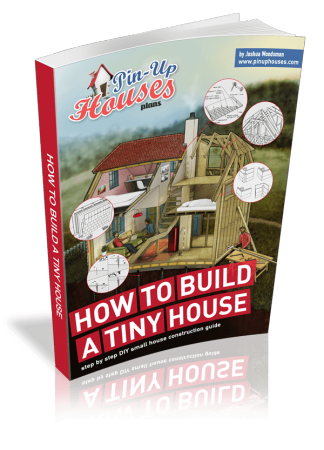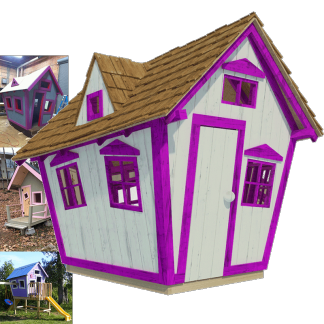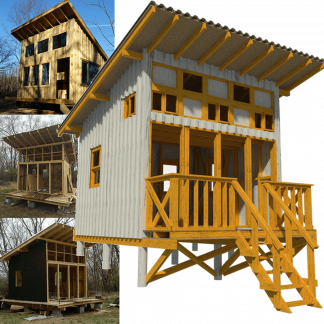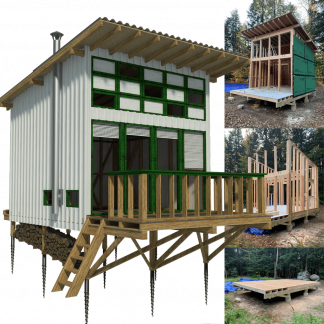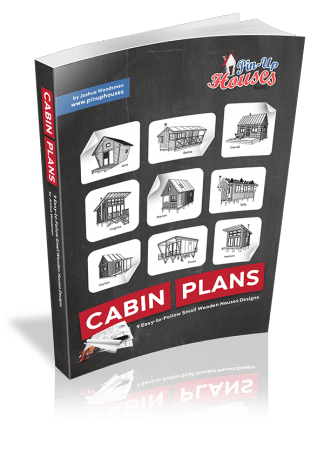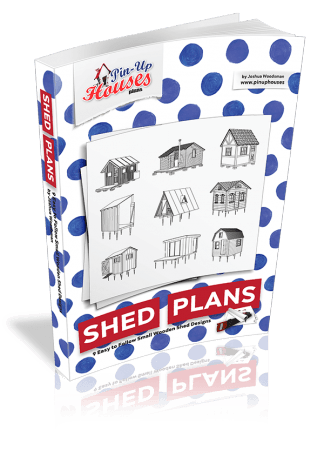
If you’ve ever weathered a storm in an old wooden cabin, you know how unforgiving nature can be. Strong winds can rip off roofing shingles like paper, while heavy rain sneaks through the cracks in aging siding and floods the crawlspace before you even realize what’s happening. Suddenly, you’re not just cleaning up a mess—you’re fighting to protect your property from cabin leaks and further damage.
In remote or rural areas, where log cabin repair and restoration specialists aren’t always nearby, the first 48 hours are critical. Emergency repairs of siding and roof during this window can prevent mold, rot, and structural failures that escalate from inconvenient to catastrophic. But it’s not just about the house—it’s about safety. Loose beams, waterlogged floors, and exposed wiring turn your cabin into a hazard zone fast.
Storms typically hit hardest in areas with older or minimally insulated homes. A log cabin, charming as it is, doesn’t have the modern waterproofing of suburban builds. And when you’re far from a hardware store or general contractor, DIY emergency home repairs often become your only option.
Emergency Home Repairs Every Cabin Owner Should Know
After the storm moves on and you step outside, the scale of damage becomes clearer—and often more alarming. Before anything else, check for the following:
- Downed power lines or live electrical hazards
- Broken roof shingles or missing metal panels
- Detached siding or holes in exterior walls
- Water entering through chimney seams or skylights
- Flooded basements or crawlspaces
Handling these issues isn’t just about minimizing cosmetic damage. Every hour counts in limiting long-term decay. When insulation gets wet, it stops working. When wood gets soaked, it starts rotting. And when water sits in dark places like attics or beneath floorboards, mold sets in faster than you think.
Here’s what your emergency home repairs priority list should look like:
- Disconnect the power. Even if the lights are still on, moisture and electricity are a bad mix.
- Remove soaked rugs, bedding, and soft materials. They trap moisture and grow mildew fast.
- Seal the roof. A tarp or even heavy-duty plastic sheeting can stop a cabin leak from turning into a full ceiling collapse.
- Check your subfloor. If water got into the crawlspace, ventilate it immediately. Mold loves sealed, wet places.
- Secure siding. If wind has pulled back parts of your siding, use screws or wood battens to temporarily fasten it down until proper siding repair can be done.
For those who aren’t afraid to get their hands dirty, having a DIY emergency repair kit can make all the difference. At minimum, it should include:
- Roofing tar or sealant
- Waterproof tape
- Flashlight and headlamp
- Industrial tarp
- Heavy-duty gloves
- Hammer, nails, and screws
- A pry bar for removing compromised wood
Emergency Home Maintenance for Log Cabin Repair and Restoration
One thing every cabin owner eventually learns? Maintenance is survival. A small unchecked leak in September can become a full-blown roof repair job by January. That’s why emergency home maintenance is as much about prevention as it is about reaction.
Log cabin repair and restoration isn’t just about aesthetics—it’s about preserving the structural bones of your home. Because these cabins are often built from natural materials, they’re more susceptible to weathering than concrete or steel-framed houses.
Here’s how to protect your cabin, especially after extreme weather:
- Inspect log ends. These are the first places water will penetrate. If they’re dark, swollen, or cracking, treat them fast.
- Reseal joints. Use caulking designed for log homes. It keeps out rain, bugs, and cold air.
- Check the chinking. This material between logs can shrink or degrade over time. Look for gaps or sagging.
- Re-stain damaged walls. A fresh coat of stain every few years prevents UV and water damage.
- Elevate vulnerable areas. If your cabin sits on low ground, consider elevating the foundation or adding a moisture barrier beneath the floorboards.
Storms accelerate deterioration. After just one intense season, a property that was fine last year can suddenly need major log cabin restoration.
And here’s the thing—sometimes, the repairs you don’t see are the most urgent. A small cabin leak behind a wall may not make noise, but it can invite termites, rot out support beams, or warp flooring. If you suspect internal water damage, don’t delay an inspection. It’s cheaper to pull one wall panel now than to rebuild an entire corner later.
What If You Can’t Afford Home Repairs Right Away?
Here’s the uncomfortable truth: emergency repairs are expensive. Whether it’s replacing shingles, drying insulation, or rebuilding an entryway, these aren’t budget line items you plan for—especially when they happen all at once.
If you’re like many rural homeowners, you may find yourself in the all-too-familiar situation: you need urgent work done, but you can’t afford home repairs upfront. Roofing contractors may want a deposit. Material suppliers may need full payment. And even small jobs—like buying six sheets of plywood and some waterproof underlayment—can total $300+ instantly.
So, what are your options?
- Get quotes—even for small jobs. Some contractors offer payment plans or discounts for off-season work.
- Prioritize structural integrity. Focus on fixes that protect the home from water or pests. Cosmetic repairs can wait.
- Look for local aid. Rural counties or nonprofit groups sometimes offer emergency home maintenance grants for storm victims.
- Consider short-term funding. This doesn’t mean maxing out your credit card. Some services provide small loans or advances for urgent home expenses.
Most importantly, don’t delay essential safety work just because the full repair feels unaffordable. Even if you can’t afford a full roof repair, adding temporary sealant and coverage today can buy you the time you need to figure out financing.

Make It Watertight Today: Emergency Repairs for Cabin Leaks and Roof Damage
When a storm passes, you don’t always have time—or money—for a full contractor crew. But moisture doesn’t wait. The faster you take control, the fewer long-term problems you’ll face. That’s why every cabin owner should be prepared to act fast with basic tools and knowledge.
Here’s a DIY emergency repair checklist to make your cabin watertight today:
- Tarp the roof immediately. Use heavy-duty plastic sheeting or weatherproof tarps to cover holes or missing shingles. Nail them down with furring strips or wood battens to prevent wind lift.
- Seal siding gaps. Wind and water often loosen siding or create cracks at seams. Apply exterior-grade caulk to minimize leaks.
- Block window leaks. Use clear plastic and painter’s tape inside until permanent repairs are possible. Don’t forget to check window sills for pooling water.
- Redirect water away from the foundation. Dig shallow drainage trenches or reposition downspouts. Even a plastic sheet spread on the ground can help in a pinch.
- Use plywood to cover broken windows or wall breaches. Cut to size and screw in place with washers to protect the wall interior from further damage.
- Dry out insulation and subfloors. Use fans or portable dehumidifiers if you have power; otherwise, ventilate well and remove soaked materials quickly.
- Check the attic. Often overlooked, attics are the first place where water intrusion turns into structural damage. Look for soggy joists, dark patches, or soft decking.
If critical damage makes it impossible to wait—like holes in the roof, severe cabin leaks, or exposed electrical areas—some homeowners turn to small, same-day financial solutions to cover unexpected cabin costs for materials like tarps, plywood, or emergency labor. In extreme cases, it’s important to stabilize your home right now and avoid more expensive repairs later.
Navigating Insurance Claims and Repair Timelines After Storm Damage
Once your cabin is temporarily secure, it’s time to deal with the paperwork. But anyone who’s filed a storm damage claim knows: insurance is slow, and emergency home repairs often can’t wait for approvals.
Here’s what you need to know:
- Document everything. Take clear photos of all visible damage, both outside and inside. Include timestamps, if possible.
- Don’t discard materials yet. Even ruined siding, soaked insulation, or broken glass can serve as proof for your claim.
- File early. Insurance companies operate on a first-in, first-out basis during disasters. The faster you act, the faster you’ll see a response.
- Know your deductible. Many storm-related policies have higher deductibles than typical coverage. You might be responsible for the first $1,000–$2,500.
- Temporary repairs are often reimbursable. Keep all receipts for tarps, caulk, plywood, or emergency labor. If repairs prevented further loss, they may count toward your claim.
Timelines vary, but don’t expect a check overnight. For small cabins in remote areas, assessments can take a week or longer. And if you need specialist log cabin repair and restoration, you might be waiting another month just to get on the schedule.
In the meantime, here’s what to do:
- Maintain your temporary fixes. Re-tarp if the wind shifts. Keep an eye out for new cabin leaks.
- Stay in contact with your adjuster. Respond to emails, upload documents quickly, and ask for clarification if needed.
- Avoid making full repairs too early. Some insurers require photos of original damage before paying. Don’t block yourself from coverage.
- Start researching contractors. Once funds are released, you’ll want to act fast before local labor gets booked up.
Remember: insurance is designed to reimburse—not rescue. That means emergency home maintenance is still your responsibility in the short term. And delaying action often means doubling the cost later.
Restoration Takes Time. Protection Starts Now
There’s something timeless about a log cabin standing firm in the woods. But as rugged as it may look, even the sturdiest cabin can’t outmuscle a severe storm without regular upkeep—and quick response when things go wrong.
If you take one thing away from this guide, it’s this: preparation isn’t optional. Whether you live in your cabin full-time or use it as a seasonal getaway, basic emergency repair skills and supplies are essential. So is a backup plan when finances run thin.
Not every storm leads to disaster. But every storm tests your home—and your readiness.
So patch that roof. Dry that crawlspace. Brace that siding. And next time the winds howl, you won’t just hope for the best—you’ll be ready for it.

